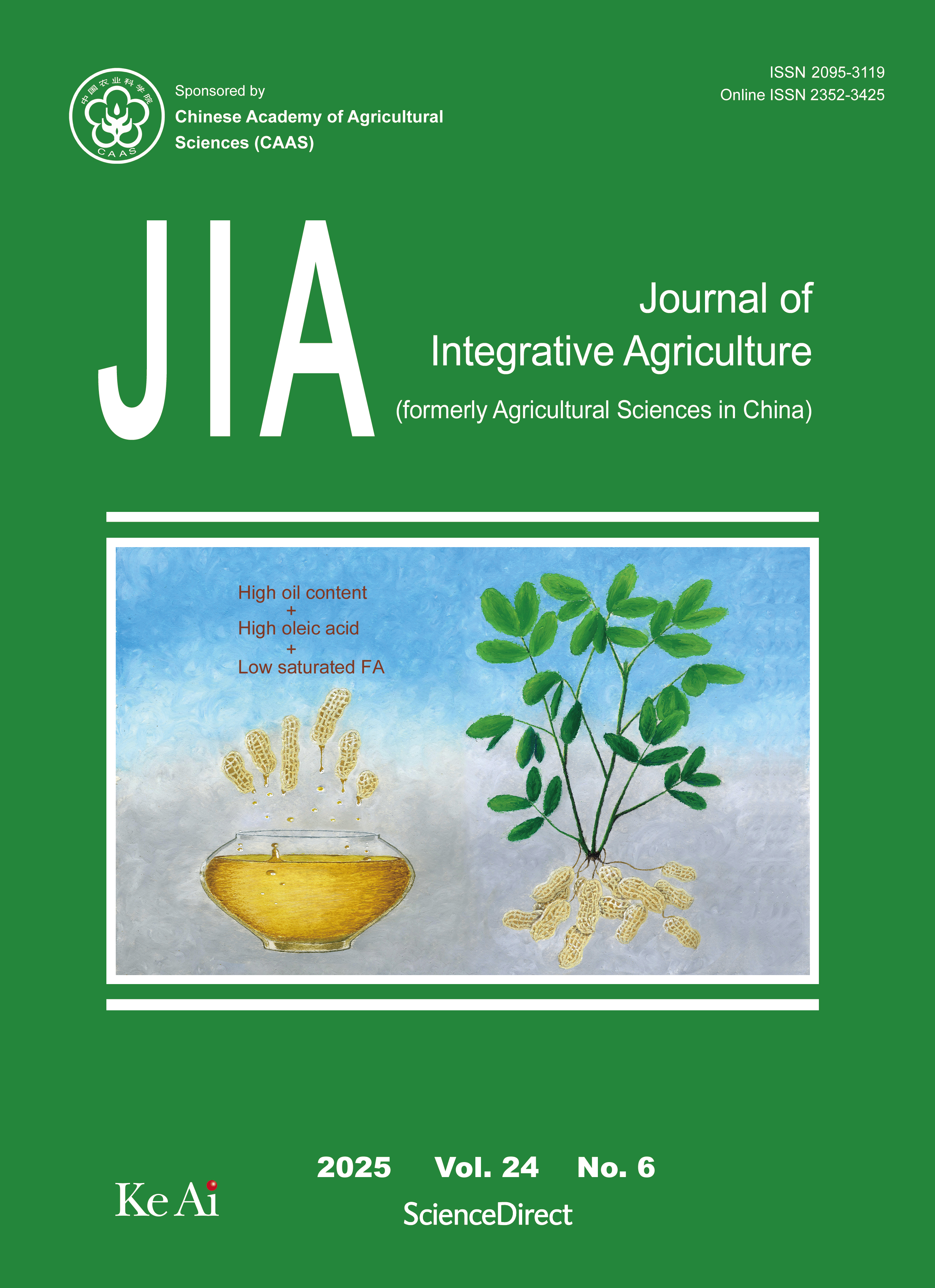当前位置: 首页 > 文章 > Effects of long-term straw return on soil organic carbon fractions and enzyme activities in a double-cropped rice paddy in South China
农业科学学报 (英文)
2021,20
(1)
Position: Home > Articles > Effects of long-term straw return on soil organic carbon fractions and enzyme activities in a double-cropped rice paddy in South China
Journal of Integrative Agriculture
2021,20
(1)
Effects of long-term straw return on soil organic carbon fractions and enzyme activities in a double-cropped rice paddy in South China
作 者:
Huang Wan;Wu Jian-fu;Pan Xiao-hua;Tan Xue-ming;Zeng Yong-jun;Shi Qing-hua;Liu Tao-ju;Zeng Yan-hua
单 位:
Jiangxi Agr Univ, Key Lab Crop Physiol Ecol & Genet Breeding, Collaborat Innovat Ctr Modernizat Prod Double Cro, Minist Educ,Coll Agron, Nanchang 330045, Jiangxi, Peoples R China
关键词:
double-cropped rice paddy system;straw return;straw burned return;SOC fractions;soil enzyme activities
摘 要:
Long-term straw return is an important carbon source for improving soil organic carbon (SOC) stocks in croplands, and straw removal through burning is also a common practice in open fields in South China. However, the specific effects of long-term rice straw management on SOC fractions, the related enzyme activities and their relationships, and whether these effects differ between crop growing seasons remain unknown. Three treatments with equal nitrogen, phosphorus, and potassium nutrient inputs, including straw/ash and chemical nutrients, were established to compare the effects of straw removal (CK), straw return (SR), and straw burned return (SBR). Compared to CK, long-term SR tended to improve the yield of early season rice (P=0.057), and significantly increased total organic carbon (TOC) and microbial biomass carbon (MBC) in double-cropped rice paddies. While SBR had no effect on TOC, it decreased light fraction organic carbon (LFOC) in early rice and easily oxidizable organic carbon (EOC) in late rice, significantly increased dissolved organic carbon (DOC), and significantly decreased soil pH. These results showed that MBC was the most sensitive indicator for assessing changes of SOC in the double-cropped rice system due to long-term straw return. In addition, the different effects on SOC fraction sizes between SR and SBR were attributed to the divergent trends in most of the soil enzyme activities in the early and late rice that mainly altered DOC, while DOC was positively affected by beta-xylosidase in both early and late rice. We concluded that straw return was superior to straw burned return for improving SOC fractions, but the negative effects on soil enzyme activities in late rice require further research.
关键词:
double-cropped rice paddy system%straw return%straw burned return%SOC fractions%soil enzyme activities
摘 要:
Long-term straw return is an important carbon source for improving soil organic carbon (SOC) stocks in croplands, and straw removal through burning is also a common practice in open fields in South China. However, the specific effects of long-term rice straw management on SOC fractions, the related enzyme activities and their relationships, and whether these effects differ between crop growing seasons remain unknown. Three treatments with equal nitrogen, phosphorus, and potassium nutrient inputs, including straw/ash and chemical nutrients, were established to compare the effects of straw removal (CK), straw return (SR), and straw burned return (SBR). Compared to CK, long-term SR tended to improve the yield of early season rice (P=0.057), and significantly increased total organic carbon (TOC) and microbial biomass carbon (MBC) in double-cropped rice paddies. While SBR had no effect on TOC, it decreased light fraction organic carbon (LFOC) in early rice and easily oxidizable organic carbon (EOC) in late rice, significantly increased dissolved organic carbon (DOC), and significantly decreased soil pH. These results showed that MBC was the most sensitive indicator for assessing changes of SOC in the double-cropped rice system due to long-term straw return. In addition, the different effects on SOC fraction sizes between SR and SBR were attributed to the divergent trends in most of the soil enzyme activities in the early and late rice that mainly altered DOC, while DOC was positively affected by β-xylosidase in both early and late rice. We concluded that straw return was superior to straw burned return for improving SOC fractions, but the negative effects on soil enzyme activities in late rice require further research.




